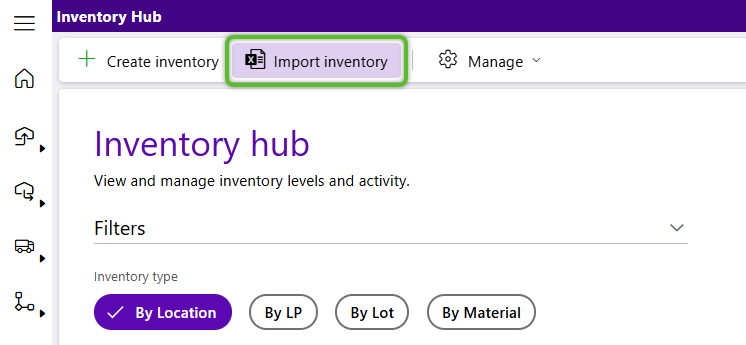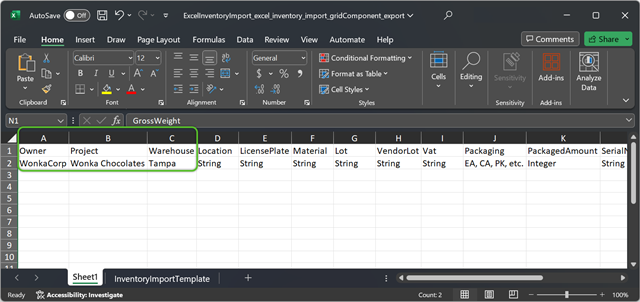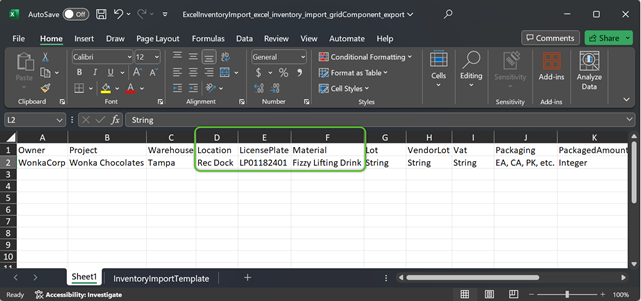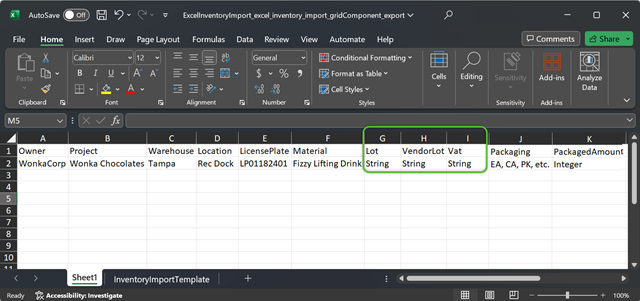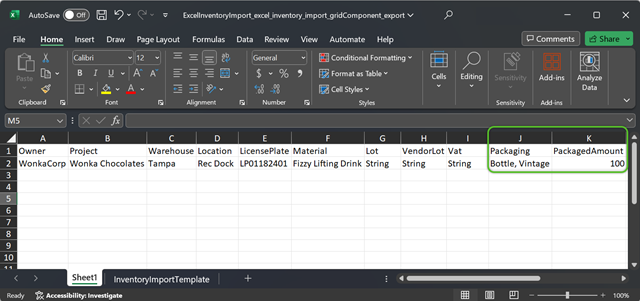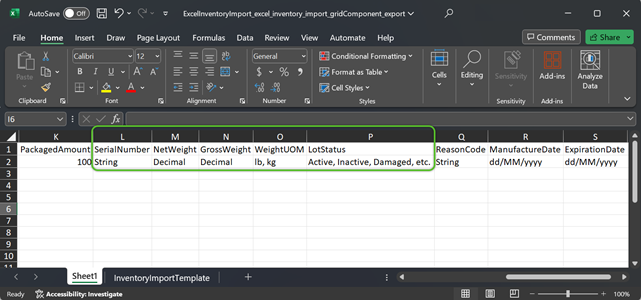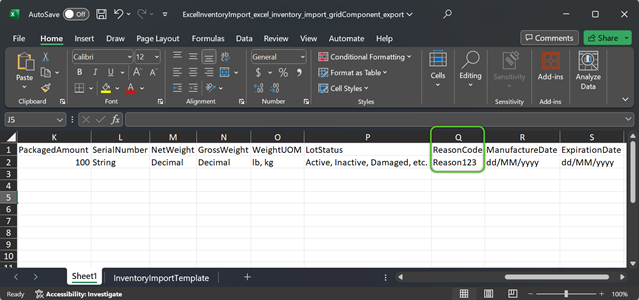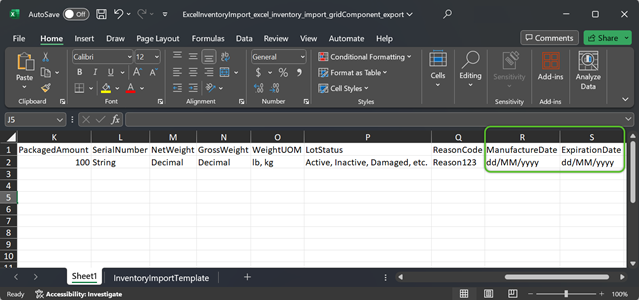Import Inventory
Imported Inventory will appear alongside other Inventory for review and management.
Please Note
-
For the most comprehensive import, we recommend downloading the latest export file with up-to-date features and fields.
-
The import process is intended for creating new records. Enter as many details as possible when importing, as attempting to update existing records will result in an error.
-
All date values must follow the MM/DD/YYYY format. If the spreadsheet contains dates, please double-check they are formatted accordingly before proceeding with the import process.
-
Imports are limited to 5000 lines. Please break down larger imports into files with no more than 5000 lines.
2. Click the Export option at the top of the Inventory Import page.
The import Inventory template file will be downloaded to the user's default download location.
3. Locate the file named 'ExcelInventoryImport_excel_inventory_import_gridComponent_export' and double click on it to open it.
Important
While the name of the file can be changed, do not make changes to the name of any column in the import file. This will cause the automated import process to fail.
Important
When adding data to the import file, all capitalization, spelling, and spacing-- including spaces at the beginning or end that may not be easily seen, must match exactly with the Warehouse, ProjectLookupCode, and MaterialLookupCode fields in Footprintor an error will occur when importing.
6. When possible, enter details in optional columns G, H, and I, keeping mind that the Import process is not intended for future data updates.
If these details are not going to be imported, be sure to delete the 'String' value from these fields before importing.
8. When possible, enter details in optional columns L, M, N, O, and P, keeping mind that the Import process is not intended for future data updates.
If these details are not going to be imported, be sure to delete the pre-existing values before importing.
10. When possible, enter the optional details in the remaining optional columns, keeping mind that the Import process is not intended for future data updates.
The Inventory details will display with a Status of Ready.
12. Click the Run import button to submit data.
13. Once the import data is submitted it can be viewed as either completed or reviewed for errors by switching the Import Status filter. If there are any errors correct as directed on the import template file and resubmit.
The newly imported Inventory will now display alongside other inventory in the Inventory Hub.
| Last Updated: |
| 08/12/2025 |

